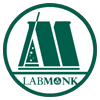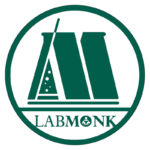BACKGROUND
Peptic ulcer defined as an ulceration of the mucous membrane of the stomach, duodenum or esophagus. The imbalanced secretions of gastric acid, pepsin and duodenal mucosal defense mechanisms are the causes of such ulcers. Excessive non-steroidal anti-inflammatory drugs (NSAIDs) consumption of can cause damage of gastrointestinal mucosa leading to ulcers.1
Aim of this experiment is to screen the drugs for their antiulcer activity.
REQUIREMENTS
Animals: Albino Wistar rats of (200-300 g) either sex
Drugs: Aspirin- 400 mg/kg, p.o.
Ranitidine 30 mg/kg, p.o.
Dissolve both drugs in 1% CMC.
Chemicals: 1% CMC.
Instruments: Dissecting microscope (10X magnification lens),
Surgical instruments.
PROCEDURE
Select albino rats weighing 200-300 g and divide them into two groups consisting of 3 animals in each group. Group-1 receives 1% CMC. Group-2 receives Ranitidine (30 mg/kg, p.o.). Administer Aspirin (200 mg/kg)/Diclofenac sodium (100 mg/kg) suspended in 3 ml of CMC after 30 minutes of antiulcer drug administration in both groups. Avoid access to feed and water to animals. After 6 hours sacrifice the animals by cervical decapitation. Open along the greater curvature of the stomach, remove the stomach contents and wash with 0.9% saline. Observe for the ulcers formed and measure the length of each ulcer and calculate ulcer index.2,3
Ulcer score: 1 mm (pin point) = 1; 1-2 mm = 2; >2 mm = 3; >3 mm = 4
Ulcer index= (U1 + U2+ U3) × 10-1
U1 = Average of number of ulcers per animal
U2 = Average of severity score
U3 = Percentage (%) of animals with ulcer
Intensity of ulcers with scoring: 0-normal coloration, 0.5-red coloration, 1-spot ulcer, 1.5-hemorrhagic stress, 2-deep ulcer and 3-perforations.
OBSERVATIONS
| Group | Ulcer index |
| Control (saline+ NSAIDs) | |
| Standard (NSAIDs+Ranitidine 20 mg/kg P.O) |
CONCLUSION
Comparison of ulcer index between study groups estimates the potency of antiulcer activity of test drug.
REFERENCES
- Wallace JL. Baillieres Best Pract Res Clin Gastroenterol. 2000;14(1):147-59.
- Rao ChV, Ojha SK, Radhakrishnan K, Govindarajan R, Rastogi S, Mehrotra S, et al. Antiulcer activity of Utleria salicifolia rhizome extract. J Ethanopharmacol 2004;91:243-9.
- Thirunavukkarasu P, Ramkumar L, Ramanathan T. Anti-ulcer Activity of Excoecaria agallocha bark on NSAID-induced Gastric Ulcer in Albino Rats. Global J Pharmacol. 2009;3(3):123-6.
Also read:
- Evaluation of anti-Parkinsonian activity of drugs by drug induced catatonia
- Anti-allergic activity by mast cell stabilization assay
- Acute toxicity testing for ocular preparations
- Acute toxicity testing for topical preparations
- Calculation of Body Surface Area (Using a Nomogram)
- Estimation of white blood cell count (TLC/ Total Leucocyte Count)
- Determination of the concentration of potassium ion using Flame Photometry
- Mutagenesis with Ethidium bromide/NTG or EMS
🔴 Would you like to attempt Labmonk Daily quiz? Click here
🔵 Check out Jobs & Exam Notices. Labmonk Notice Board
🔴 Labmonk Scholarships. Click here
🔵 Labmonk Blog. Click here
🔴 Do you need notes? Click here
Watch Career related videos on Youtube: Watch now !!



